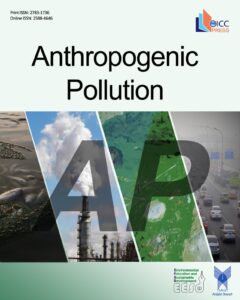Investigation and determination of land use effects on surface water quality in semi-arid areas: Case study on Qarasu River in Iran
Authors
Abstract
Increasing population growth and civilization have caused great impacts on water quality. Among these, changes and excessive exploitation of land use have led to changes in the surface water quality to provide human needs. Therefore, the present study investigated the effects of land use on water quality using a spatial-statistical approach. To this end, the water quality data of 22 water quality-sampling stations were applied in the Qarasu watershed in Ardabil. Then, spatial analysis was conducted, including land use classification maps, watershed mapping and overlaying maps using GIS. Finally, correlation and multiple linear regression analysis were used to determine the relationship between water quality and land use variables. Pearson’s correlation coefficient showed proper percentages of vegetation cover, agricultural lands, woodlands, residential users, barren land and forest as well as weak pastureland have significant correlation with water quality variables. Multiple linear regression analysis with stepwise approach also indicated that of dependent parameters as water quality variables, the parameters of pH, Cl, Ca, Mg, Na and SAR are associated with land use as independent parameters including irrigated agriculture, first-grade pasture, third-grade pasture, woodlands, moorland, forest and residential users. Furthermore, validation of the model based on two models of the survey of predicted and actual values as well as root-mean-square error (RMSE) demonstrated good accuracy of the resulting model.




